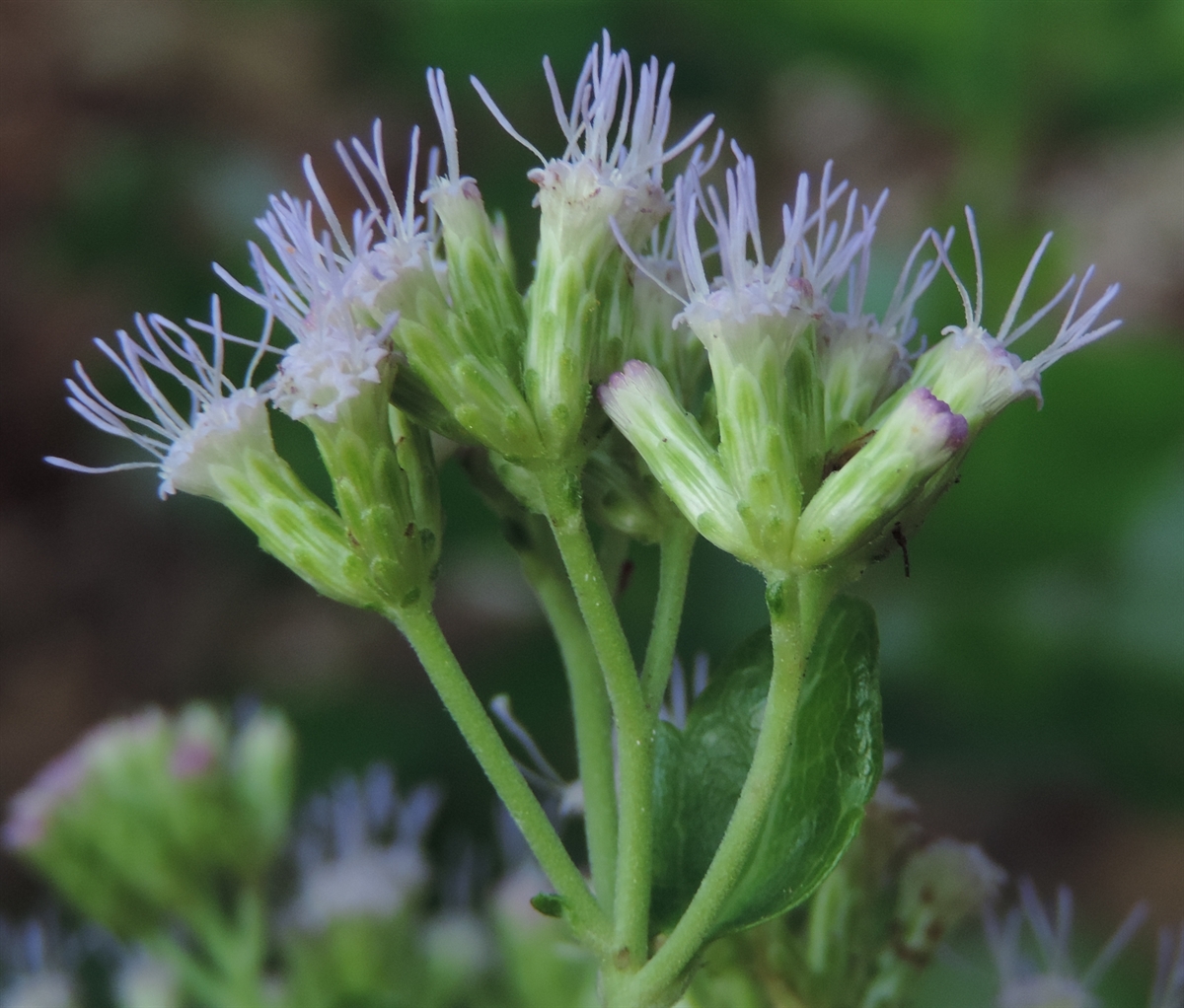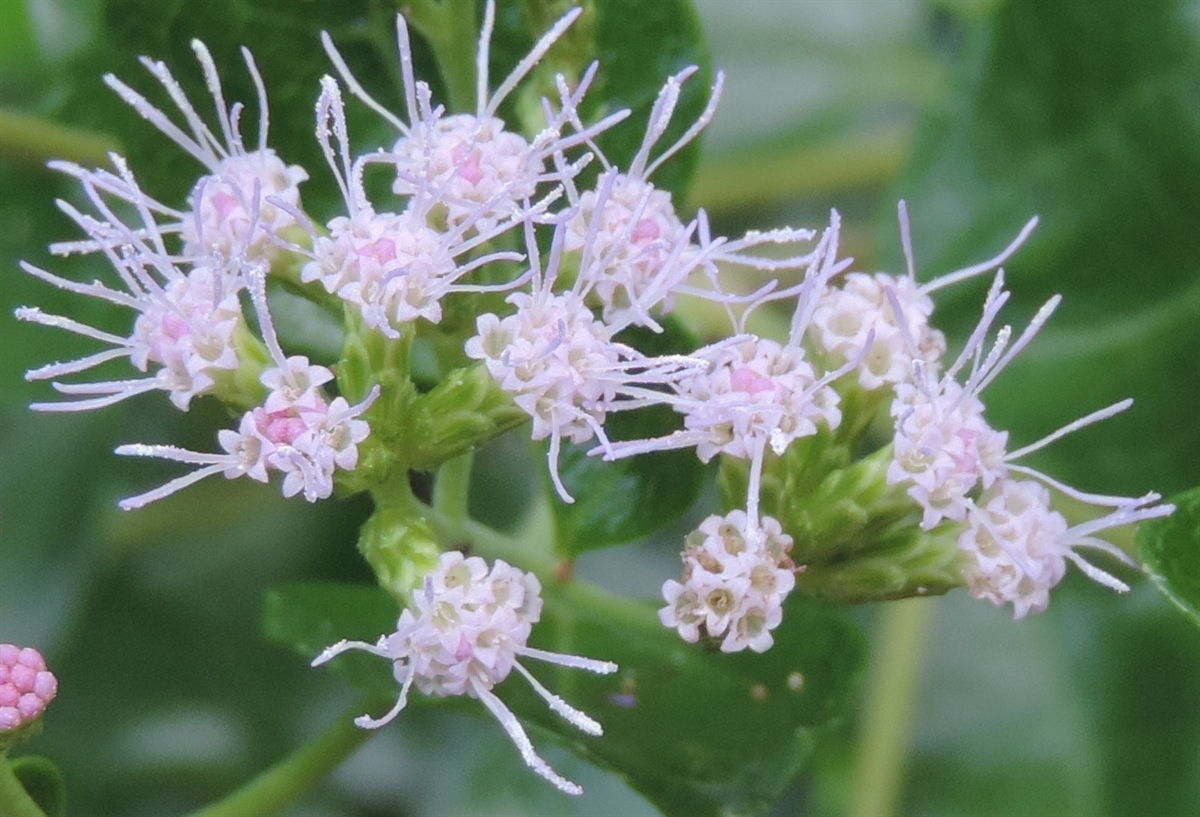Habit: Chromolaena corymbosa a woody perennial shrub to 2 meters in height. The leaves are arranged oppositely, to 5 cm in length, ovate, with a crenate leaf margin.
The complete, perfect, actinomorphic flowers are arranged in corymbs of heads subtended by an involucre made of 4 series of phyllaries. The calyx is modified as hairs forming a pappus. The corolla has 5, fused white to lavender petals. There are 5 stamens fused to the base of the corolla. The ovary is inferior with a single locule. The fruit is an achene at maturity that retains the modified calyx (pappus).
Habitat: Chromolaena corymbosa grows in coastal areas in a sand substrate.
Distribution: Chromolaena corymbosa occurs in the central island groupings of the Lucayan Archipelago, the southern Caribbean region and northern South America.
Medicinal/Cultural/Economic usage: Chromolaena corymbosa is not known to be used medicinally in the Lucayan Archipelago.


